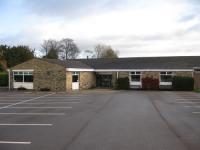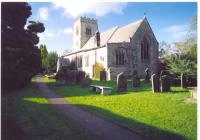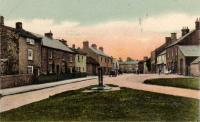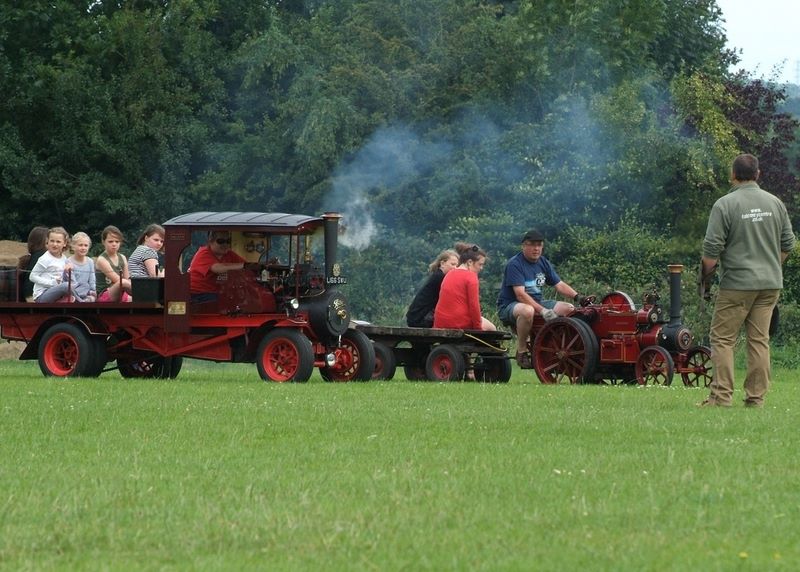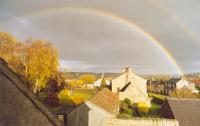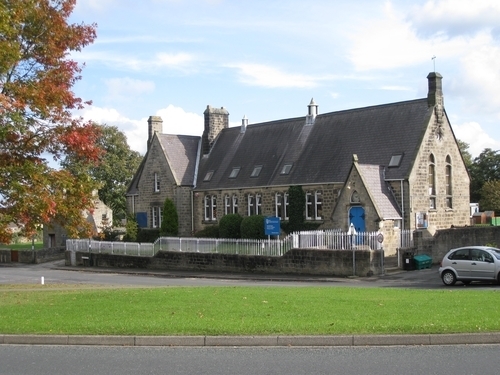Recent articles
© DT Online 2010 - 2025
| Station House (the old station)Looking north from the river bridge it is possible, even today, to see the route of the railway which passed through Hampsthwaite on its way to Pateley Bridge before the line was closed in the 1950s. As the road (Station Lane) winds it way up from the river and towards Clint it bends sharply right as it passes on its left the remains of the old railway embankment and railway bridge. The embankment is clearly visible as it heads west but to the east the ground has been levelled somewhat and the land on that side of the road gives no immediate clue as to its former use. However, over to the east can be seen the station building now converted to a dwellinghouse as seen in the first photograph above. The railway line opened in 1862 and carried both passengers and freight. Hampsthwaite station was opened in 1866 but was the first of the branch line's stations (the others were Ripley, Birstwith, Darley, Dacre and Pateley Bridge) to close - in 1950. In the following photograph we see a view of the station probably taken when the line had been closed to passenger traffic but when freight was still being carried (1951-1964). In the next photograph we see one of the station masters, Harry Robinson, standing on the platform which still remains and can be glimpsed in the photograph of the modern house at top of page. Shown below is a similar view of the same platform taken in 2010 . . . By kind permission of Colin Waite the following edited extract from his book “Reflections of Killinghall” is reproduced here
[It was the 1st of May 1862 when the single line railway connecting Nidd with Pateley Bridge was opened for traffic. The first sod in the construction of the line had been cut by Sir Henry Ingleby of Ripley Castle at Killinghall Bridge in September 1860. Sir Henry, along with two other prominent Nidderdale landowners, the Greenwoods and the Yorkes, was a member of the branch line’s management committee. Other members of the committee represented the dale’s economic interests in lead mining and flax spinning. It was due mainly to the enthusiasm and determination of one of the flax mill owners, George Metcalfe junior, from Glasshouses, that the Nidd to Pateley Bridge line was opened at all. George’s father, John, had become a director of the Leeds-Thirsk Railway Company, which had opened in 1848, on the understanding that it would operate a branch line from Nidd Bridge to Pateley, a project envisaged as early as 1845. But the company, which was eager to extend its main line from Thirsk to Stockton and Hartlepool, postponed the construction of the Pateley branch. At a meeting of shareholders in August 1851, the directors were criticised so strongly by George Metcalfe for their failure to start the proposed line that the chairman demanded a public apology. Not that George’s words fell on deaf ears because the chairman also promised the meeting that the company would start the line as soon as they had completed the Teesside extension. But a year later brought a change of heart as the directors reported they had doubts about the commercial viability of building the branch line. George Metcalfe’s reaction was to look elsewhere for support and when the North Eastern Railway Company was formed, by the amalgamation of several lines in 1854, he led a deputation to put a positive case for the Pateley Bridge branch line. The board agreed in principle to the proposal but nothing happened for another four years. Finally, probably in desperation, Nidderdale people agreed to raise half the capital required, in the form of £40,000 of North Eastern preference stock with a guaranteed four per cent interest, and work finally began on the branch line fifteen years after it was first envisaged. Not surprisingly, George Metcalfe junior was chaired by an enthusiastic crowd at the 1862 opening ceremony of what was called the Nidd Valley Line, when his dream of bringing rail transport to Nidderdale became a reality. Built on the northern side of the River Nidd to follow its course from Pateley Bridge to Killinghall, work started on the single branch line at Nidd, on the former Leeds Northern Line between Harrogate and Ripon . . . . . . . . . .When finished, the line consisted of 11½ miles of track and cost £8,000 a mile to construct. Local historian William Grainge was one of the early passengers and he forecast that the railway would, “open out a new district to the tourist and the health seeker, where they may roam at leasure amid the wildest mountain glens, and imbibe health and strength from the purest mountain breezes, receiving a welcome from people at once hospitable and independent” . . . . . . . . . . In its early days the Nidd Valley Line ran four trains in each direction. Those leaving Harrogate departed at 9.30am,12noon,4.20pm, and 8.50pm and returned from Pateley Bridge at 7.45am, 10.30am, 3.00pm and 5.15pm. The opening notice clearly shows that the trains took only ten minutes to reach Killinghall from Harrogate, and 28 minutes to reach Killinghall from Pateley Bridge. Trains connected in Harrogate to offer services to Ripon, Thirsk, Leeds and York . . . . . . . . . . One destination that was important to most people in the area was Knaresborough, particularly on market days, which were opportunities to trade and stock up with provisions. To meet this demand the Nidd Valley Line ran two trains every Wednesday in both directions between Knaresborough and Pateley Bridge via Starbeck Junction. No trains ran at all on the line on Sundays. By 1874, twelve years after its official opening, there was a slight change to the line’s timetable because the first train from Harrogate at 8.55am connected with the 8.20am Thirsk to Leeds service, which by-passed Harrogate by using Starbeck Junction, north of the junction for the Pateley Bridge line. Over the years the train service increased to six trains each way per day and by 1923 there were seven trains travelling each way on a daily basis. All this apparent progress was to come to a halt 28 years later when all the stations on the branch line were closed to passenger traffic on the 2nd of April 1951. Goods traffic did continue, but only until the next decade. (In 1964) . . . the line itself stopped operating a goods traffic service completely. In 1965, a hundred years after Grainge had promoted the “more ready access given to the ‘great world’ by the recently opened railway”, local people witnessed the sorry sight of the track being taken up. Today all that remains of George Metcalfe junior’s dream of a new era of commercial prosperity for Nidderdale are the still familiar outlines of the embankments and tunnels along the route from Nidd to Pateley Bridge.] ****** According to the 1871 census the stationmaster was Thomas Chandler aged 34 and he shared the house with his wife Matilda (30) and their four sons Thomas (11), Charles (6), Christopher (4) and George A. (2). Both Christopher and George were said to have been born in Clint (the parish in which Station House actually stands) so, presumably, the family had been in occupation since 1867 or earlier which suggests that Thomas senior was the first stationmaster for Hampsthwaite. By the time of the 1881 census Thomas and his family had moved to Leeds where Thomas was employed as an "agent" and his son Christopher (14!) as a railway porter. |











